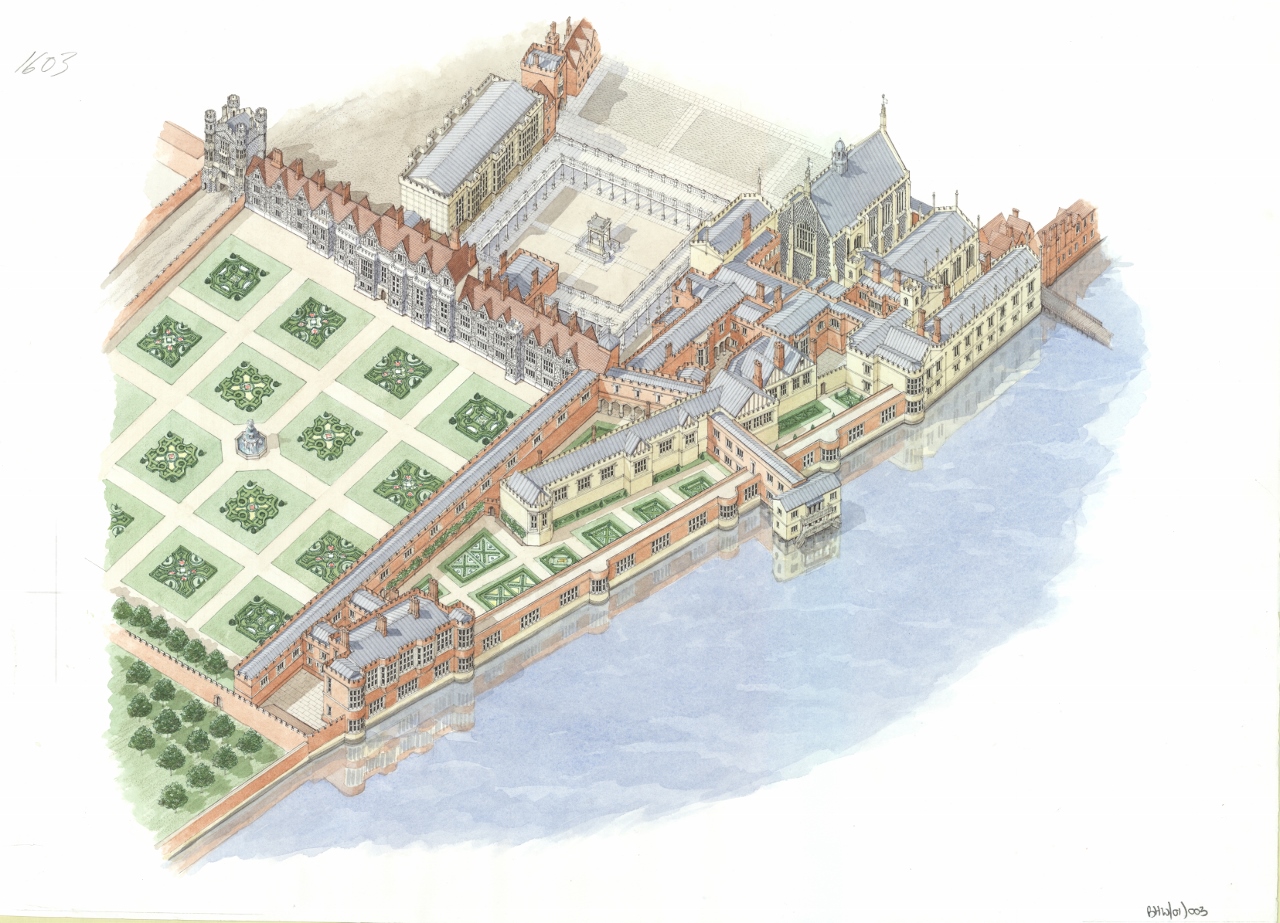The Lost Palace of Whitehall
Chapter 4 : A Bachelorette's Whitehall
Henry VIII died at Whitehall in 1547 and the palace passed down to his son Edward VI and shortly after Mary I. Elizabeth I acceded to the throne in 1558 and for the next four decades Whitehall would be her home. Though few radical changes were made to the palace under Elizabeth’s reign, Whitehall became the setting of magnificent pageantry, courtship and marriage negotiations.
The matter of Elizabeth’s marriage had gained a level of urgency upon her becoming queen as it was necessary for her to provide an heir to the throne. Elizabeth was one of the most eligible monarchs in Europe and was not short of suitors. However, in order to maintain stability on the continent, any match had to be carefully negotiated. Whitehall Palace became the centre stage for these diplomatic discussions. The palace was specifically decorated for the reception of ambassadors and embassies arriving to negotiate with Elizabeth’s advisers. The visits of the foreign dignitaries were celebrated with feasts and various entertainments.
However, the palace Elizabeth inherited lacked a venue suitable for such state occasions. The great hall built by Wolsey was large but it was not modern enough. Thus in 1581 when negotiations were underway for Elizabeth’s marriage to the Duke of Alencon, brother of the French King Henry III, orders were given for the construction of a banqueting house. The reception and festivities marking the French embassy’s arrival were to centre around the new banqueting house and consequently the building had to be a display of magnificence and splendour. Erected to the east of King Street and just north of the Privy Garden, the timber framed building was covered in canvas and had 292 glass windows. A foreign traveller visiting Whitehall in 1584 described the new building as “a lofty spacious house” with a roof “hung with foliage and shrubs”.
The French match fell through and Elizabeth never married, living in Whitehall as a single queen surrounded by her ladies and favourites. Though the pomp around her marriage negotiations died down, Whitehall remained the setting of other pageantry. Some of the most elaborate festivities associated with Elizabeth’s reign were the annual Accession Day tilts that celebrated the day Elizabeth became queen. Combining jousting with poetry, speech, allegorical costumes and pageantry, the spectacles took place in the Whitehall tiltyard. The queen would sit in a gallery at one end of the yard watching the knights arrive in a remarkable parade of floats and costumed servants.
The Accession Day tilts of 1584 were witnessed by the writer Lupold van Wedel who recorded the entrance procession:
“The combatants had their servants clad in different colours…Some of the servants were disguised like savages, or like Irishmen, with the hair hanging down to the girdle like women, others had horses equipped like elephants, some carriages were drawn by men, others appeared to move by themselves; altogether the carriages were very odd in appearance.”
Following their spectacular entrance, the knights addressed the queen with speeches and presented her with gifts before combating each other on horseback. This tradition carried on until Elizabeth’s death in 1603 but the smell of horses still lingers on the site of the old tiltyard, which is now occupied by Horse Guards.





